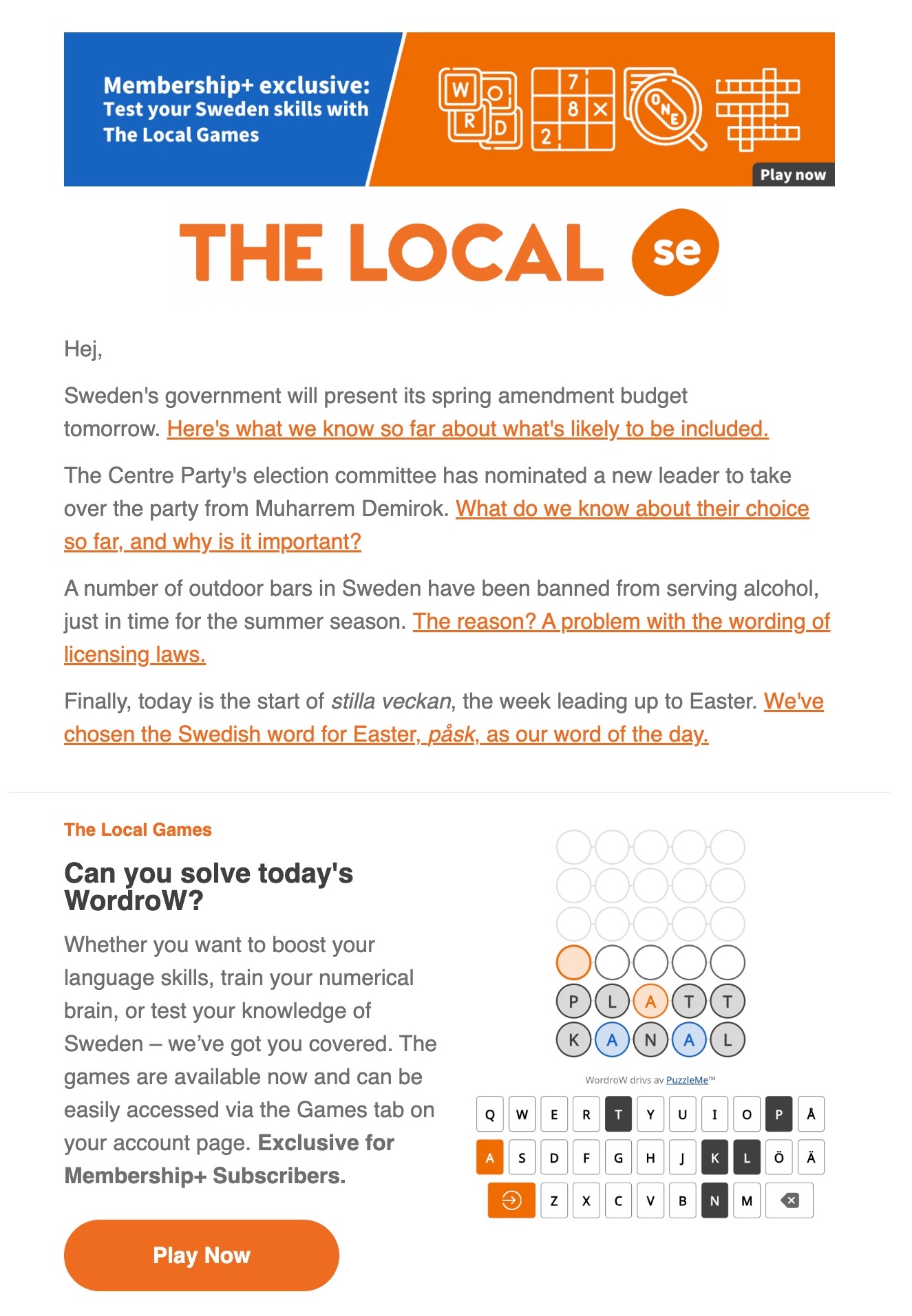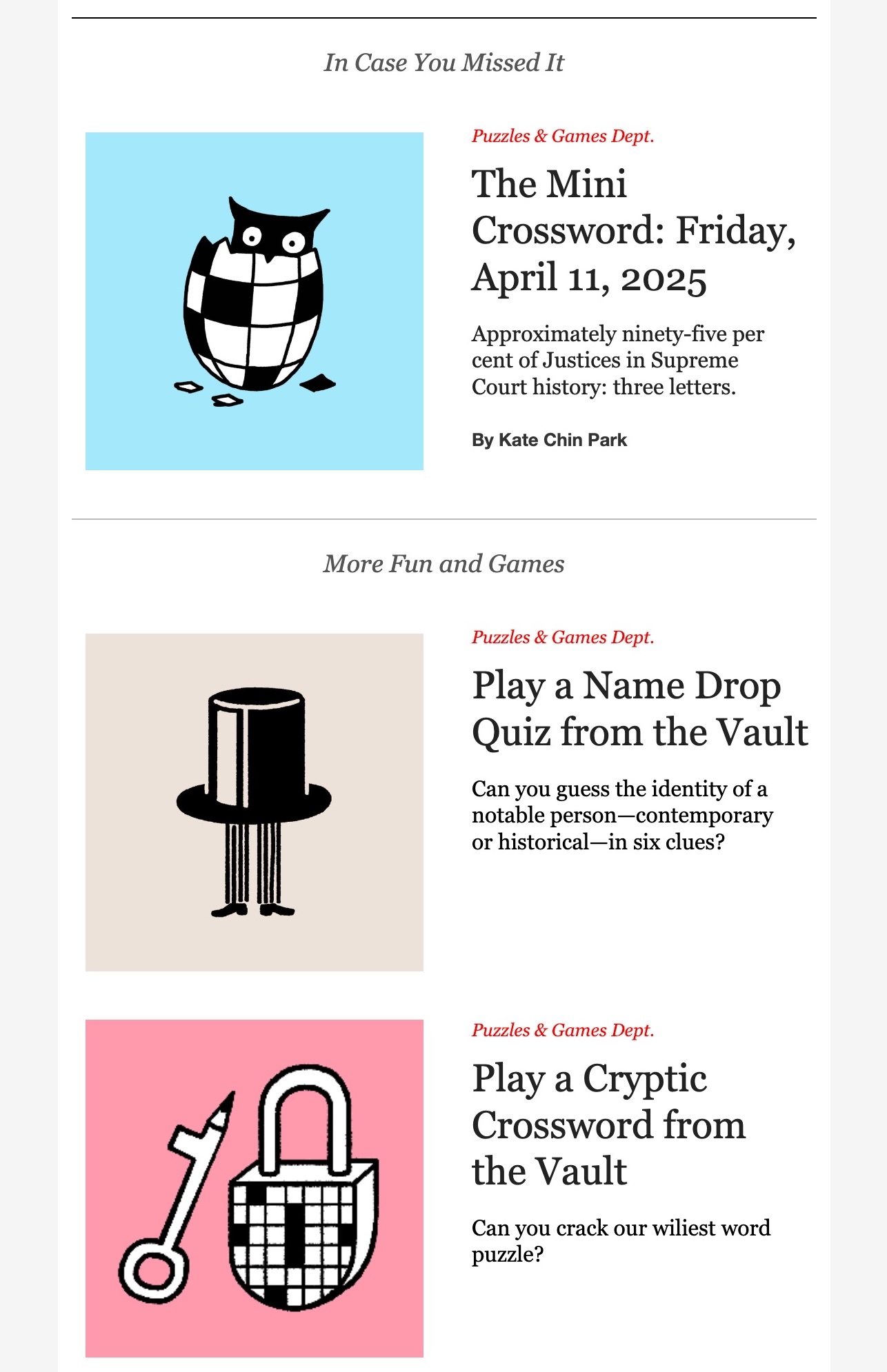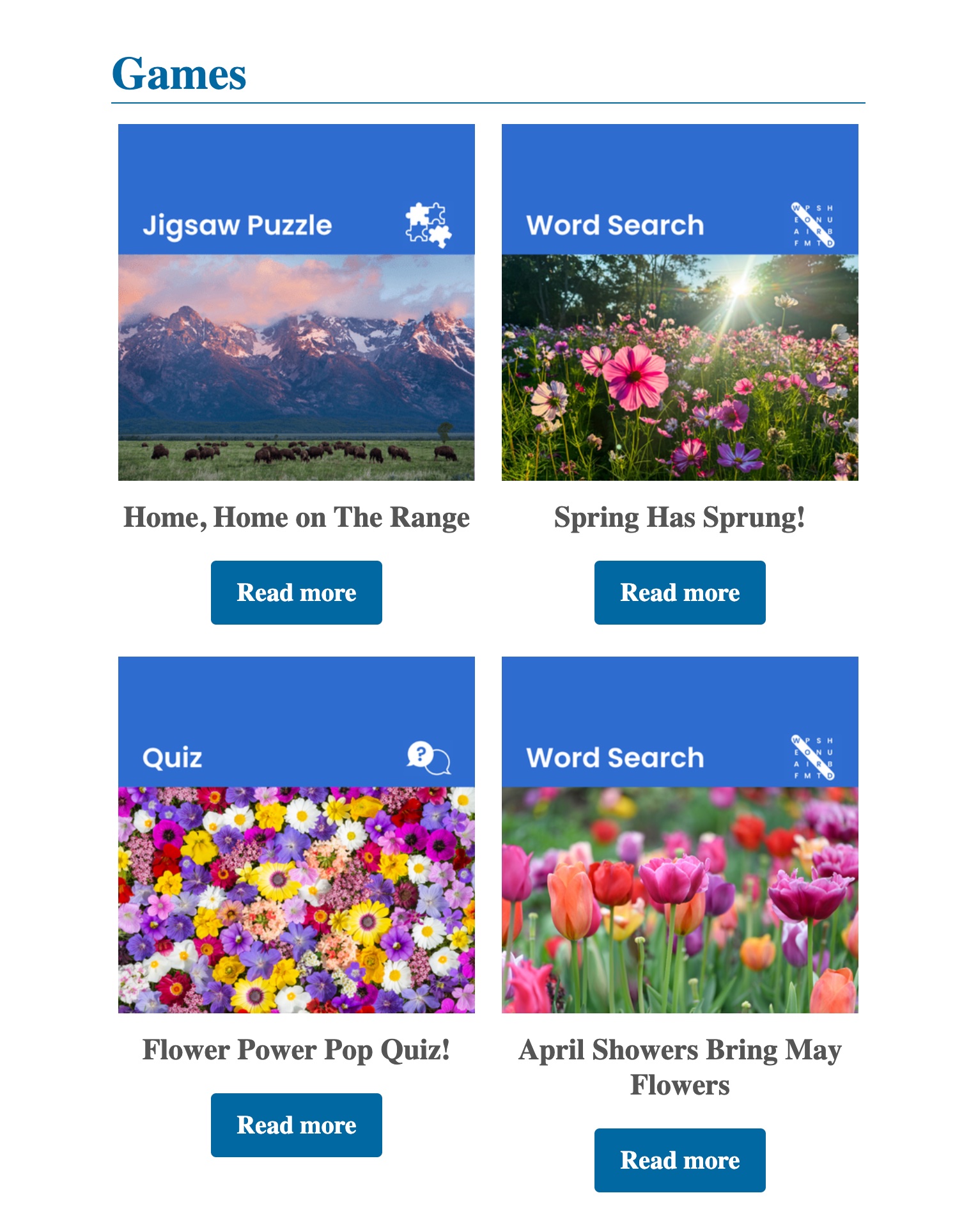Newsletter guidelines
Learn how to effectively integrate games into your newsletters to boost engagement and drive traffic.
Why add games to newsletters?
Newsletters are among the best drivers of awareness and usage of a publisher's games. Links to games are regularly cited as being among the most clicked items in the newsletters of Amuse Labs partners. Incorporating games into newsletters adds an enjoyable interactive dimension to the reading experience.
Best practices for newsletter integration
1. Clear communication
Say what it is and what to do - Provide a short, engaging introduction with a clear call-to-action.
- Write a brief, fun description that sparks curiosity
- Include a prominent "Play Now" button
- Make it simple, direct, and easy to follow

2. Visual appeal
Make it look fun - Use engaging visuals and playful descriptions to draw readers in.
- Use catchy, colorful images
- Write playful, energetic descriptions
- Add visual elements that stand out
- Keep the tone light and entertaining

3. Dedicated section
Include a dedicated games section - Create a consistent space for games in your newsletter.
- Place games in a predictable location
- Make it feel like a special treat for readers
- Build anticipation and routine
- Create a highlight moment in the newsletter

4. Seamless integration
Make it fit in - Ensure the puzzle matches your newsletter's tone and style.
- Match the overall tone of your content
- Feel natural and well-placed
- Add value without disrupting the flow
- Maintain the newsletter's personality
5. Consistency
Keep it consistent - Regular inclusion builds reader expectations and habits.
- Include games in every newsletter
- Use familiar formats and sections
- Build reader anticipation
- Create a trusted, expected feature
6. Data-driven approach
Know what works - Use analytics to optimize your game selection and presentation.
- Track engagement metrics (plays, completion rates, time spent)
- Identify which puzzle types perform best
- Monitor reader preferences over time
- Fine-tune your approach based on data
Success factors
What makes it work
- Consistency: Ensure there's a game in the newsletter regularly
- Audience focus: Use analytics to understand what works best for your readers
- Clear calls to action: Simple, easy-to-understand play buttons drive engagement
- Playful, not pushy: Keep it fun and engaging, not like a sales pitch
Measuring success
Track these key metrics to optimize your newsletter games:
- Click-through rates on game links
- Play completion rates for different puzzle types
- Time spent on games
- Return engagement from newsletter readers
- Website traffic from newsletter game links
Newsletter examples and resources
Online archives
- Morning Brew - Publishes different games each day: Archive
- Newsletter Bank - Collection of other publishers' newsletters: Newsletter Bank
Start with one game per newsletter and gradually increase frequency based on reader engagement and feedback.
- Clear game description and call-to-action written
- Engaging visual elements selected
- Dedicated games section created
- Consistent placement established
- Analytics tracking set up
- Success metrics defined
- Regular publishing schedule planned